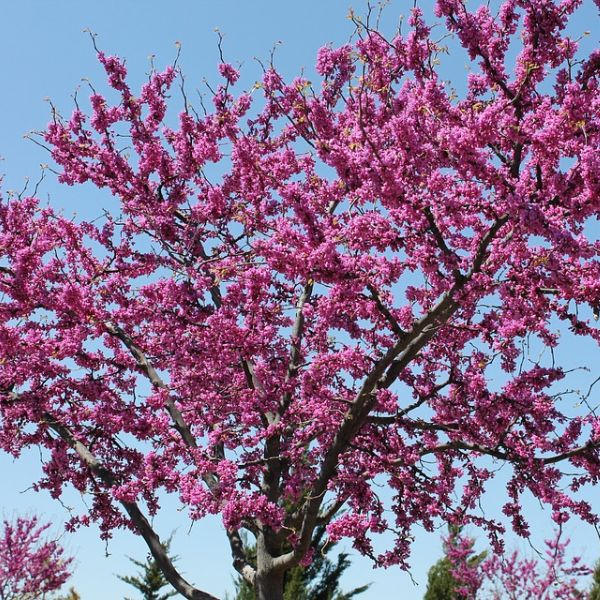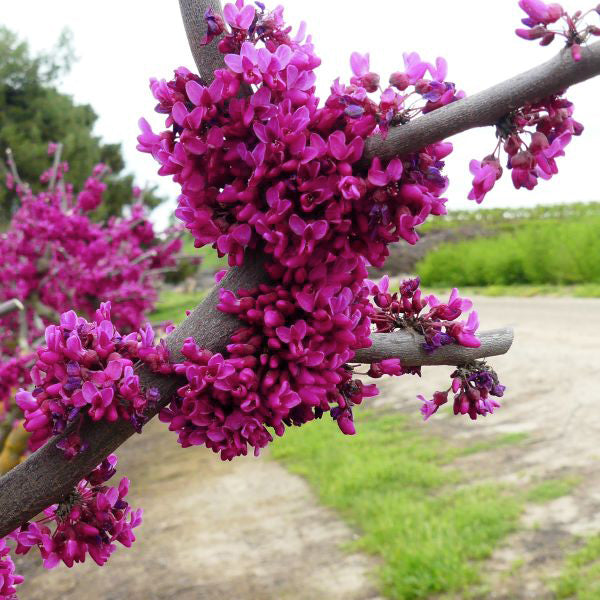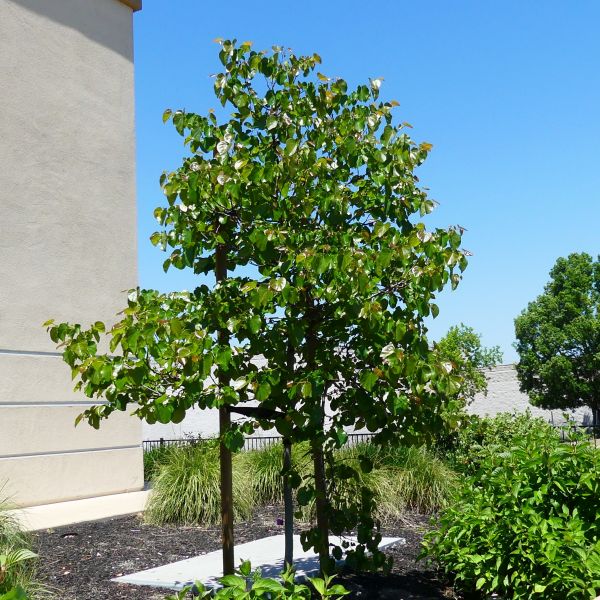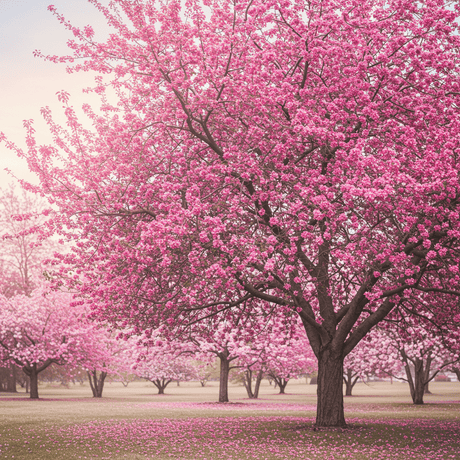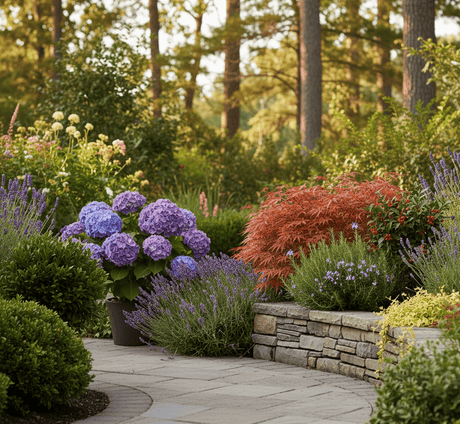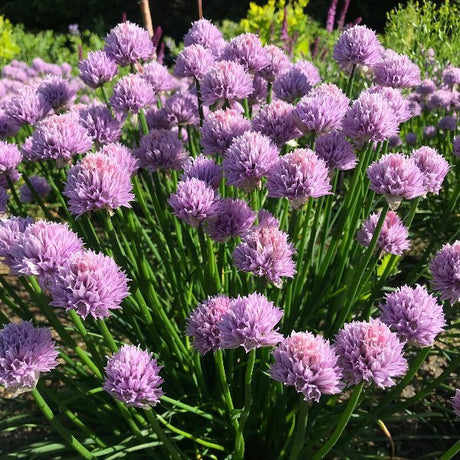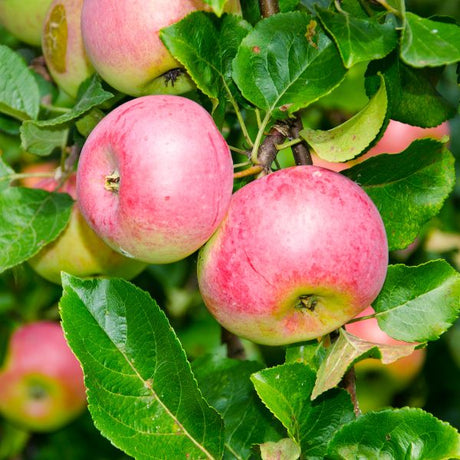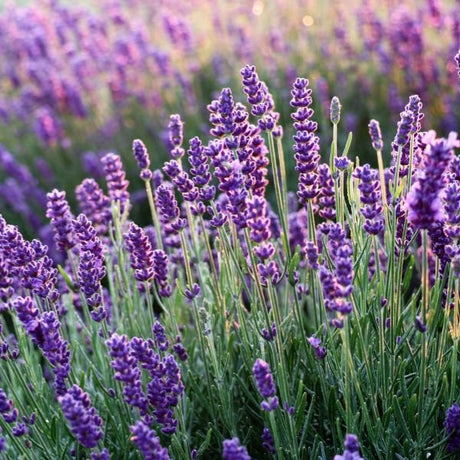Oklahoma Redbud Tree
Cercis canadensis var. texensis 'Oklahoma'
- Stay Protected with Plant Sentry ™
Oklahoma Redbud Tree - #3 Container 4-5 Feet Single Stem is backordered and will ship as soon as it is back in stock.
Plant Sentry™
Plant Sentry™

Plant Sentry™ Protected
Your order is protected by our compliance system that:
- Prevents restricted plants from shipping to your state
- Ensures plants meet your state's agricultural requirements
- Protects gardens from invasive pests and diseases
Delivery and Shipping
Delivery and Shipping
Delivery and Shipping
Fast, Safe Plant Delivery
Ships in 3-4 business days • Tracking provided • Weather protected
| Under $50 | $9.99 |
| $50 - $99.99 | $14.99 |
| $100 - $149.99 | $16.99 |
| $150+ | $24.99 |
✓ Zone-specific timing • ✓ Professional packaging • ✓ Health guarantee
Understanding Plant Options
Nature Hills offers plants in two main formats:
- Container Plants: Grown in pots with soil, sized by container volume and plant age
- Bare Root Plants: Dormant plants without soil, sized by height measurements
Container Plant Sizes
Container sizes indicate plant age and growing capacity rather than liquid volume equivalents. Our containers follow industry-standard nursery "trade gallon" specifications, which differ from standard liquid gallon measurements.
Young Plants (6 months to 18 months old)
| Container Size | Actual Volume | Metric Equivalent |
|---|---|---|
| 2" x 2" x 3" | 0.18 - 0.21 dry quarts | 0.20 - 0.23 dry liters |
| 4" Container | 0.31 - 0.87 dry quarts | 0.35 - 0.96 dry liters |
| 4.5" Container | 0.65 dry quarts | 0.72 dry liters |
| 6" Container | 1.4 dry quarts | 1.59 dry liters |
| 1 Quart | 1 dry quart | 1.1 dry liters |
| 5.5" Container | 1.89 dry quarts | 2.08 dry liters |
Established Plants (18 months to 2.5 years old)
| Container Size | Actual Volume | Metric Equivalent |
|---|---|---|
| 2 Quart | 2 dry quarts | 2.2 dry liters |
| #1 Container | 2.26 - 3.73 dry quarts | 2.49 - 4.11 dry liters |
| 5" x 5" x 12" | 3.5 - 4.3 dry quarts | 3.85 - 4.74 dry liters |
Mature Plants (2-4 years old)
| Container Size | Actual Volume | Metric Equivalent |
|---|---|---|
| #2 Container | 1.19 - 1.76 dry gallons | 5.24 - 7.75 dry liters |
| #3 Container | 2.15 - 2.76 dry gallons | 8.14 - 12.16 dry liters |
Large Plants (3-5 years old)
| Container Size | Actual Volume | Metric Equivalent |
|---|---|---|
| #5 Container | 2.92 - 4.62 dry gallons | 12.86 - 20.35 dry liters |
| #6 Container | 5.25 - 6.01 dry gallons | 23.12 - 26.42 dry liters |
| #7 Container | 5.98 - 6.53 dry gallons | 26.34 - 28.76 dry liters |
Bare Root Plants
Bare root plants are sold by height from the root system to the top of the plant. Plants may exceed minimum height requirements.
Common Sizes:
- Trees: 1 foot, 2 feet, 3 feet, 4 feet, 5 feet, 6 feet
- Shrubs & Perennials: 1 foot, 18 inches, 2 feet
Important Notes
Container Volume Specifications
- Trade Gallon Standard: Our containers follow industry-standard "trade gallon" specifications established by the American National Standards Institute (ANSI Z60.1) for nursery stock
- Volume Variations: Actual soil volume may vary due to plant root systems and growing medium settlement
- Age Indicators: Container size primarily indicates plant age and maturity rather than liquid volume equivalents
Growing Conditions
- Plant size can vary based on variety and growing conditions
- Container size helps indicate plant maturity and establishment level
- Larger containers generally mean more established root systems and faster landscape establishment
Seasonal Availability
- Bare root plants are available seasonally when dormant
- Container plants are available throughout the growing season
- Specific varieties may have limited availability in certain sizes
Questions?
For questions about specific plant sizes or availability, please contact our plant experts who can help you choose the right size for your landscape needs.
Plant Highlights
Oklahoma Redbud Tree highlights at a glance!
-
Botanical Name
-
Brand
-
Growing Zones6, 7, 8, 9
-
Growth RateModerate
-
Mature Height
-
Mature Width
-
Leaf Color
-
Flower Color
-
Fall Color
-
NativeYes
-
Pollinator FriendlyYes
-
Bloom PeriodEarly Spring
Characteristics
Where To Plant
When To Prune
- Late Winter
Water & Moisture Needs
- Moderate
Sunlight Needs
Soil Needs
- Widely Adaptable
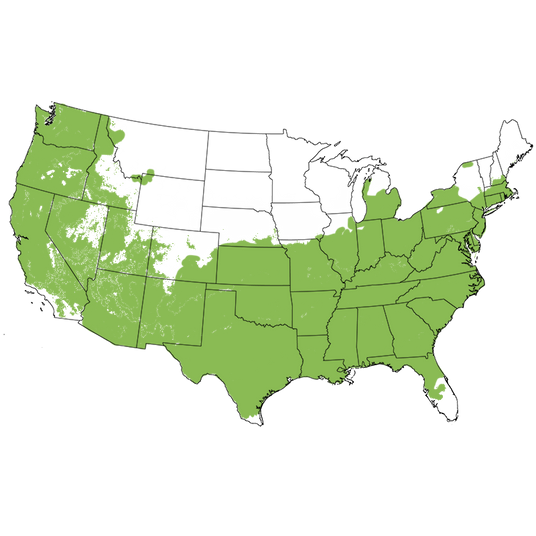
Growing Zones 6-9
Yes, this is the cute little tree you've been seeing all over town each spring ... You know the one!
With electric, magenta blooms in early spring, and super shiny, heart-shaped leaves all summer long, the Oklahoma Redbud (Cercis canadensis var. texensis 'Oklahoma') will put on quite a show. Abundant blooms cover the tree's bare branches on almost every portion of the canopy.
Watch as tiny, rosy-red to magenta blooms seem to overpower the bare branches, covering them in radiant floral beauty. The Oklahoma Redbud is all about its wonderful foliage display in the spring. The heart-shaped, dark green leaves are intensely shiny. The shimmer off the glossy canopy is amazing. It's one of the key features of this most popular Redbud variety.
When autumn arrives, you'll enjoy a lovely yellow leaf display. Lavender seeds decorate the tree through the summer and into the winter months. Oklahoma Redbud flowers and seeds are reportedly edible, with the flowers having a somewhat nutty flavor.
The gorgeous flowers provide necessary nectar for early-emerging pollinators! These blossoms become pea-like Redbud seedpods, and your backyard birds will certainly take care of them for you.
It's ok to admire this cultivar of native Redbud. The Oklahoma Redbud is a beautiful tree that performs throughout the year, even in hot, arid summers. It handles the heat in style. The color likewise holds up well to dry, high temperatures throughout USDA planting zones 6-9!
Landscape Application:
Drought tolerant, this is an easy-care tree for use as a lovely accent, or as a special focal point. Small enough to grow in a variety of locations in your yard, it was discovered growing wild in the Arbuckle Mountains, which are just north of Dallas, Texas across the Oklahoma border.
Oklahoma Redbud Tree has a beautiful compact shape with a wide, spreading habit and charmingly irregular, rounded crown. It combines beautifully with existing trees and shrubs.
It is the perfect little shade or accent tree, used almost anywhere in the landscape. One would look lovely in a formal setting by your patio or walkway.
Or, create a feature out of a larger planting. Use 3, 5, or 7 trees in a woodland setting, easily naturalizing, and rambling throughout the canopy of larger trees, not minding a touch of afternoon shade. This natural understory tree will lend an incredible wilderness effect.
- Vibrant, Petite Purple-Red Flowers
- Glossy, Heart-Shaped Leaves Shine
- Pollinator Friendly
- Vibrant Yellow Fall Foliage
- One of the Finest Accent Trees!
#ProPlantTips for Care:
It is adapted to areas of partial shade in an understory, but you'll enjoy the glossiest leaves and compact canopy if you plant Oklahoma Redbud in full sun, but you can grow yours in some partial/afternoon shade in the hottest climates. It is adapted to many soil types, including clay or sandy, and is not sensitive to soil pH. Oklahoma Redbud can even handle some periodically wet soils, as long as the drainage is good. In poor draining soils, mound the Oklahoma Redbud to 12 to 18 inches above the soil line. You'll plant directly in that mound.
Keep the root system cool in hot, dry climates with a 3 to 4-inch layer of shredded wood mulch, spread out 3 feet past the canopy. This tree will tolerate a considerable amount of heat once established.
Oklahoma, like many Redbud trees, can be grown as a single-trunk tree or trained into a multi-trunk tree depending on the effect desired in the landscape. Trim after the flowers fade to correct growth and control size.
- Best in Full Sun or Partial Shade
- Well-Drained Soils
- Moderate Moisture Needs
- Prune After Flowering
- Deer Seldom Bother These Trees
The Oklahoma Redbud takes up very little room but offers you so much in return. This unique performer is in high demand. If you see it in stock on the site, please order at NatureHills.com now.
Single Stem, Multi Stem, Shrub Form, Oh My!
Before you buy, make sure you know what you’re getting! Single stem, multi stem and shrub forms are different so read a bit about which we’re currently offering below.
Single Stem:
These are plants that have one stem coming from the ground. Plants can also be considered single-stem when lower branches are removed to raise the height of the branching. Sometimes, you will hear a single stem referred to as Tree Form.
Multi Stem:
These are plants with 2 or more stems planted together in the ground in close proximity to form a clump. There are times multi-stems are formed by a tree that branches at the soil line with more than one main stem.
Shrub Form:
These are bushy plants with many stems and branches close to the ground. They are referred to as shrubs or bushes and are often shorter than their tree forms.

